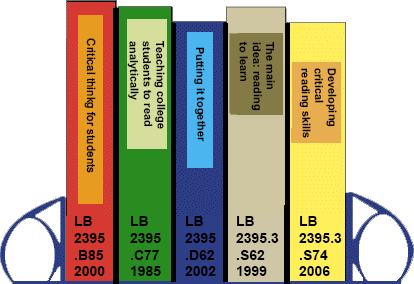What is a Call Number?
Tips for Finding Books on the Shelf
Read call numbers line by line.

1. LB (L call numbers are education related)
Read the first line in alphabetical order:
A, B, BF, C, D… L, LA, LB, LC, M, ML…
2. 2395 (Two thousand three hundred ninety-five)
Read the second line as a whole number:
1, 2, 3, 45, 100, 101, 1000, 2000, 2430…
3. .C77 (Author line)
The third line is a combination of a letter and numbers. Read the letter alphabetically. Read the number as a decimal, eg:
Some call numbers have more than one combination letter-number line.
4. 1985 (Year of Publication)
The last line is the year the book was published.
Read in chronological order:
1983, 1985, 1991, 1992…
The Parts of a Call Number
The different parts of a call number help to define the subject of the material, as seen below:
LB represents a specific area of Education, namely “Theory and Practice of Education”.
2395 further defines this book as “Methods of Study, General Works”.
.C77 is the Cutter number, which is a code for the author’s last name (in this case, Cooper).
1985 is the date of publication which is sometimes added to the call number.
This call number system allows materials on related subjects to be shelved in the same area. For example, if a patron goes to the book shelves to locate the call number LB2395.C77 1985, other books on Study Methods would be found in the vicinity.
Reading Call Numbers on the Shelf
